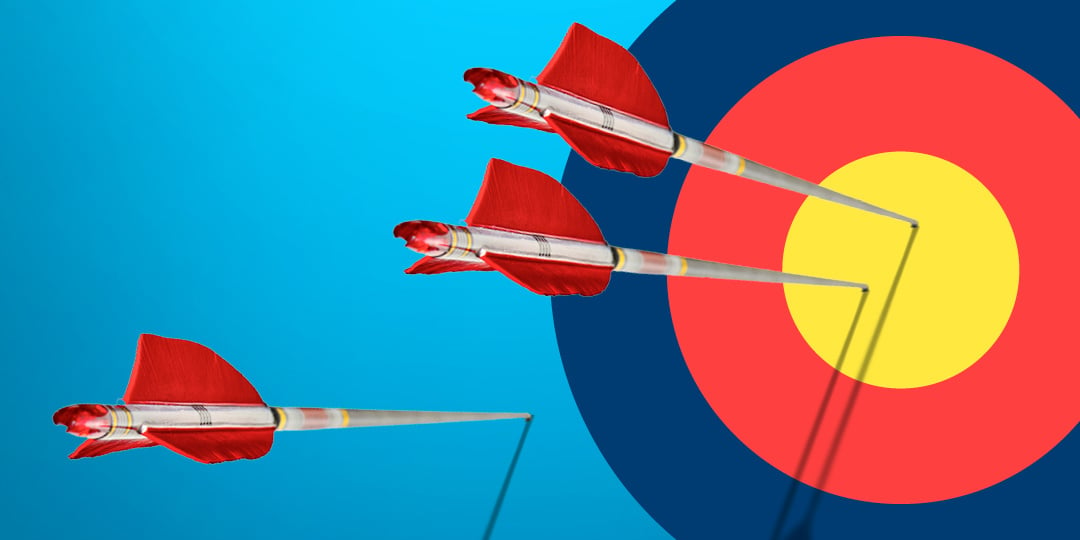How Multi-Zone Sourcing Can Save Your Supply Chain – And Your Sanity
Let’s face it, the past few years have been a crash course in supply chain fragility. If you’re a CEO or senior manager in manufacturing, you've...
All tasks in Shop Floor Management -
digitally supported with the functions of ValueStreamer®.
ValueStreamer® as a leadership tool supports the continuous improvement of processes and the optimization of collaboration.
Optimize processes in all areas of your business with digital Shop Floor Management. Learn more about the use cases.
5 min read
 Dr. Andreas Romberg
:
Jul 17, 2023 12:23:44 PM
Dr. Andreas Romberg
:
Jul 17, 2023 12:23:44 PM
The Secrets Of True Collaboration - Part 5
Good cooperation and excellent leadership can be actively shaped. Supported by effective management methods, improvements can be achieved step by step and systematically - in almost all areas of service production.The methods are summarized under the term Shopfloor Management, which we have already presented to you in an earlier article. The term is misleading in that this established management system can be used not only in production, but as well in all functional areas and processes across a wide range of environments and industries. Nevertheless, we want to stay with the naturalized term.
Simplified, shopfloor management makes operating conditions visible. If deviations from the target state occur, the state will be improved in a joint effort. That is the core. The transparency about the conditions makes fast and good decisions with direct reference to reality possible.
The effect of implemented improvements on and in the working system is also directly measurable, which at the same time increases the intensity and quality of management. In addition, recurring process confirmation and constant reflection on measures taken, supported by targeted coaching, have a positive effect on the empowerment of employees and the competence of the managers themselves. Permanent interaction almost inevitably leads to changed attitudes and behavior and, in the shadow of action, to a culture of cooperation. So now everything is fine?
No. Like any management system, Shopfloor Management also bears certain operational risks. A company always follows many processes in parallel, all of which often access the same resources in a very parallel way. Keep in mind that it is not only the dominant main processes like production/assembly or product development.
Thus, there is also a whole catalog of other processes that like to play a subordinate role in the operational activities - here, too, topics can "burn" if they are done too late. For example, the operationalization of strategic goals and objectives (keyword OKR) or an order processing as well as quotation process.
Let's take the operationalization process for strategies according to the OKR method: Here, higher-level goals, starting from the mission & vision, are broken down along the hierarchy on a quarterly basis and deployed down to the task level and are assigned to the respective employees. The completion of tasks is prioritized within all the other tasks, as in a sprint sequence, and continuously tracked with the instruments of SFM. In short: The strategy is operationalized. This is very important, because priorities are not always set correctly across all pending tasks and sensibly in this way, which can lead to confusion and overload reactions - even to target conflicts within the working system.
Hence, one is well advised to introduce a superordinate priority system for competing tasks and requirements that eliminates any contradictions, at least within a working system. This includes making different specifications from different value streams or processes transparent and arriving at clear instructions at team level. Only then can teams fully develop their operational performance - and their capacity for continuous improvement. We refer to the logic behind this process as "Performance-U". This approach combines the principles of customer-centric and agile collaboration (process or market view), communication and leadership (line view). And will be described in the next sections.
Whether you like it or not, matrix organization is a reality in most companies today - at least on paper. There will always be projects and processes that "lie at cross purposes to the line tasks or the functional organizational structure", conflicts are pre-programmed. The good news is that there is great potential for improvement here. Particularly in indirect areas and cross-functional processes, there are still true treasures lying dormant that can be lifted relatively easily.
A long list of problems that can typically occur in a matrix organization could easily be drawn up. Here are just the most important points: First, multiple subordinations (project vs. line function) lead to conflicts in resource allocation. A typical consequence is overloading of individual resources, especially employees. This often leads to negative multitasking, which in turn almost inevitably leads to procrastination and to sometimes massive disruptions in collaboration. What is missing is what is known as governance. This must create binding rules about the responsibilities, competencies, and behavior of management. Both in the line functions as well as in the additional processes and projects.
The "Performance-U" serves precisely this required governance, as a basis in which important principles of collaboration are taken into account. The principles at a glance:
The working system is open to collaboration in that tasks can be assigned and forwarded between teams of all hierarchical levels and cross-functional.
The organizations of the companies usually always have hierarchical levels in the line and the more advanced ones also in parallel in the process world. In such a "linked organization" (2 worlds), which is connected across the levels via timed and takted communication bodies, we speak of cascading across the levels.
Responsibilities for decisions and problem solving are transparently regulated across the hierarchy. And this applies to both "worlds" in the company. In this way, a cascade is created for the world of projects and processes (customer and market performance) and for the world of line functions (performance within the company). This is complex, but not necessarily complicated. You can usually get by with just a few levels, from top management to the team, the place of action and truth. Connections are made in both directions, from top down and bottom up. The image of the "Performance U" also arises from this logic. The advantage: once cascading is regulated, it saves an enormous amount of effort and prevents conflicts. Good collaboration is also possible in the matrix through efficient and systematically coordinated communication.
The truth is performance, i.e., the completion of work tasks. This takes place in the teams at the process level. The key point is that all employees have a clear team with specific expertise and thus a defined operational and organizational home. The principle of the "single point of task" now states that all tasks assigned to individual persons and their area of expertise are combined in their home team. Together with the responsibility for resources and capacities at the respective team leader. This makes fine planning and control of tasks at team level easy. Conflicts can be avoided during ongoing operations, even under high pressure. By controlling the work in progress.
Value streams must flow, as we have learned in 30 years of lean. This means that the work in progress must not come to a halt, so that there is no waste. The "work-in-progress control" required for this is carried out according to simple rules within the home teams. The top rule is to avoid overloading each individual employee. This means that resources may be scheduled at a maximum of 80 percent of their capacity. The remainder is used as a reserve for shopfloor management tasks. In other words, for deviation management improvements at all levels of the cascade. The circle is closed.
And now? Our series with the more methodical insights and assistance on "The Secrets of True Collaboration" ends with the realization that even "tricky puzzles" can be solved. With logic and methodology. With design and management. So, it is possible to build working systems on the foundation of smooth collaboration that meet all requirements for equally lean and agile processes. Verified!
Our digital Shop Floor Management software ValueStreamer® enables you to collaborate efficiently. The functions are based on the presented four principles of collaboration and help you to lead effectively.
In the next and then last contribution, as the icing on the cake of this series so to speak, I would like to announce to you our close cooperation partner Dr. Klaus-Dieter Dohne as the author. Klaus-Dieter has been very successful for years in tackling the neurobiological aspect of true collaboration in projects with organizations of various sizes.
So, stay tuned!
Best Andreas Romberg
from ValueStreamer-Team

Let’s face it, the past few years have been a crash course in supply chain fragility. If you’re a CEO or senior manager in manufacturing, you've...

What’s Going Wrong, and What You Can Do About It If you manage a mid-level manufacturing company, you know the pressure of meeting yearly goals. But...

When we think of Halloween, images of haunted houses, spooky masks and eerie fog may come to mind. But what if we told you that these elements are...

The Secrets Of True Collaboration - Part 2 Improve COmmunication - with system "You can't not communicate!" This is not an unintentional doubling...

More efficiency through digital transformation in value stream and shop floor management

1 min read
A painful lesson in leadership skills Keith Richards told Peter Jennings the following story in an interview with Rolling Stone: "A drunken Jagger...